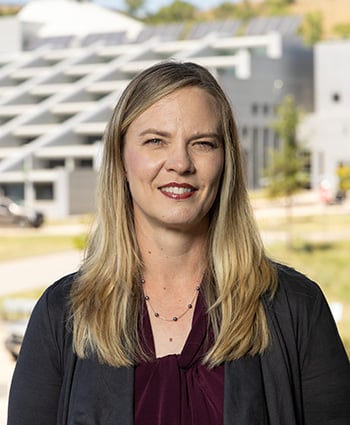Heather Platt – Sodium-Ion Battery Innovation
As part of the Mana Battery team, Heather Platt promotes the use of sodium-ion batteries as a replacement for lithium-ion batteries based on their low costs, domestically abundant raw materials, and superior safety.
About

Heather A.S. Platt
Platt is the director of Materials Engineering at Mana Battery, which advances the sodium-ion market by providing materials to manufacturers that improve battery performance and by supplying high-energy cells for grid storage and electric vehicles (EVs).
During West Gate, Platt is testing and evaluating the performance and lifespan of Mana's pouch cells—a type of battery used in cellphones, at commercially relevant scales—with the goal of facilitating prototype validation.
Critical Need
The rise of renewably generated electricity requires energy storage to ensure that consistent power is available, even during periods of low generation. The current solution, lithium-ion batteries, is not safe enough to place near population centers and is too expensive for widely deployed grid energy storage and EV applications. Sodium-ion batteries are a valid alternative, but current options have less than half the energy and shorter lifespans compared to lithium-ion technology.
Potential Impact
Mana is developing sodium-ion battery cells that provide energy levels comparable to lithium-ion cells at 35%–75% of the cost. Moreover, sodium-ion batteries can be made with minerals readily available in the United States, enabling a rapid build-out of a secure material supply chain. This solution will provide affordable energy storage and EV batteries while reducing carbon emissions.
Innovation and Advantages
Mana improves the lifespan of high-energy sodium-ion batteries through new electrolyte compositions that create stable layers on the electrodes. In lab tests, its "Generation 1" cells have shown that they can last more than twice as long as standard sodium-ion systems.
Profile
Status
Bench scale
Industry
Energy storage
Potential Markets
- Energy storage systems for microgrids and the commercial grid
- Electric vehicles
Looking For
- Industry mentors
- Funding
- Strategic partnerships
- Customer identification
- Subject matter experts
Share
Last Updated April 10, 2025
